- Essay Topic Generator
- Summary Generator
- Thesis Maker Academic
- Sentence Rephraser
- Read My Paper
- Hypothesis Generator
- Cover Page Generator
- Text Compactor
- Essay Scrambler
- Essay Plagiarism Checker
- Hook Generator
- AI Writing Checker
- Notes Maker
- Overnight Essay Writing
- Topic Ideas
- Writing Tips
- Essay Writing (by Genre)
- Essay Writing (by Topic)

Self-Portrait Essay: Examples and How to Write a Portrait

A portrait essay presents a personality to the readers. It usually focuses on the aspects of life that are the most exciting or unique.
It comprises two types of papers: a self-portrait essay and a portrait of another person. This article explains how to write these assignments with utmost efficiency. You will find the best tips, ideas, and samples to describe yourself or someone else as precisely as possible.
👧 Self-Portrait Essay
A self-portrait essay is a piece of writing that describes the author’s looks and personal qualities . It uses evocative images and characteristic details to show why this person stands out from the crowd. As a rule, it is a descriptive or reflective essay. Still, it can be argumentative if you want to contradict someone else’s opinion about you.
How to Write a Self-Portrait
Below you’ll find several ideas for a self-portrait essay. These are just general guidelines. If you need a creative and well-formulated topic, you are welcome to use our topic-generating tool .
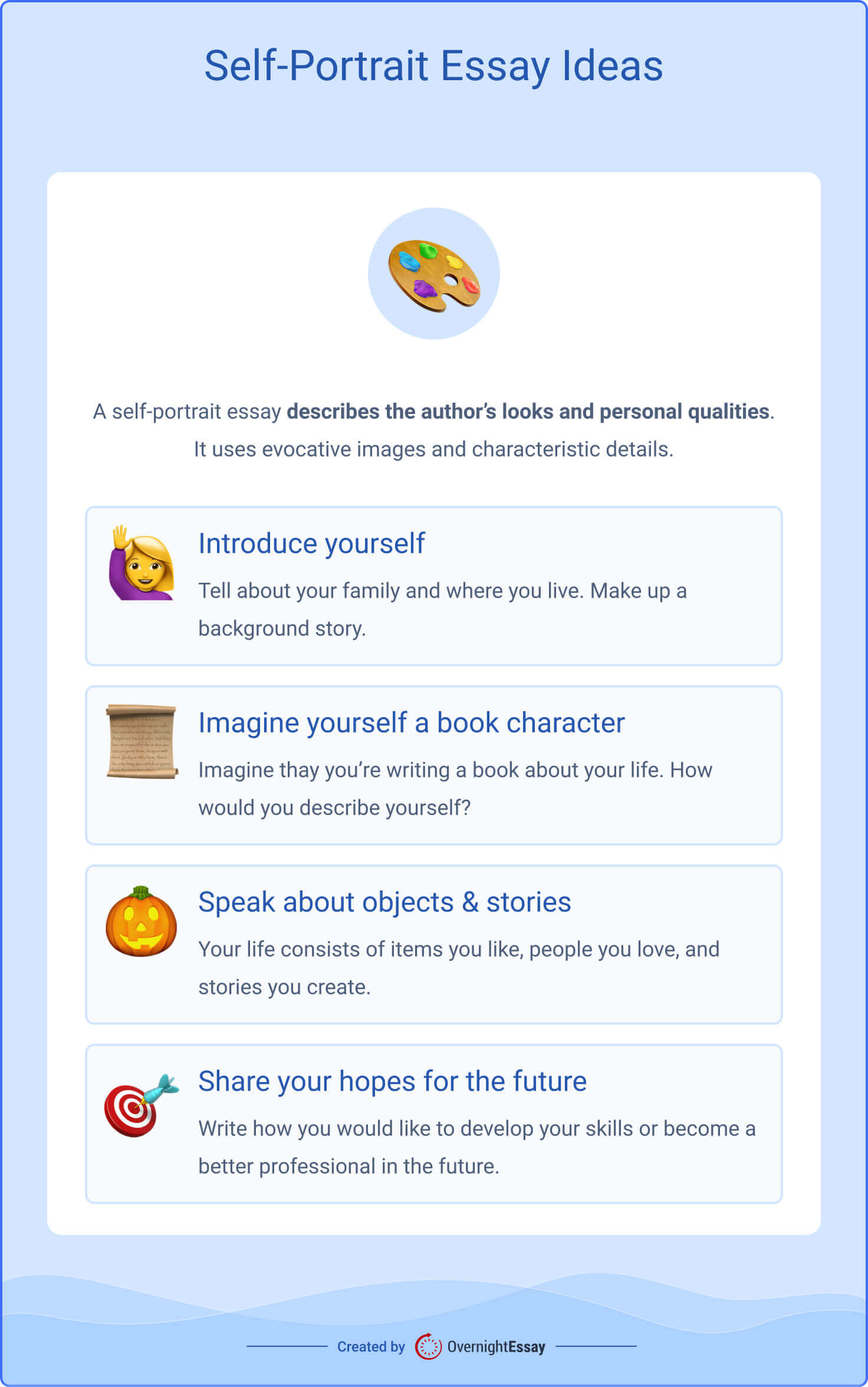
- Start the introduction with an introduction. We are not talking about “Hi, my name is Cathy,” although this variant is also possible in some contexts. Tell about your family and where you live. Do not just list facts as if you are answering a questionnaire. Make up a background story.
- Imagine yourself a book character . How would you describe yourself if you wrote a book about your life ? This approach can make your self-portrait essay more poetic and literary. Replace the epithets that can describe many people (straight nose, thin lips, high forehead) with metaphors (a nose as straight as an arrow, paper-thin lips, expansive forehead). It will make your essay more memorable.
- Speak about objects & stories. Appearance is only a tiny part of your personality . Your life consists of items you like, people you love, and stories you create. That’s what you readers will enjoy reading!
- Conclude with your hopes for the future. Do not reiterate what you said before, even if you cannot imagine anything new. Write how you would like to develop your skills or become a better professional in the future. Make your essay open-ended, as any human life is.
Self-Portrait Essay Example
Who am I? What kind of person am I? What do I like? What do I want to become? In this essay, I will describe my appearance and how it reflects my inner world. Looking in the mirror, I see a slender but slightly skinny girl. I have an oval face, a small straight nose, and sparkling eyes. It is the eyes that make my friends and acquaintances look at my face. They are profound, although they add playfulness to my face. In cloudy weather, they acquire a dark steel shade. When it is sunny, they brighten up. In general, I have kind gray eyes. As my friends say, it seems that they “laugh.” That’s what I am all about. I am kind, cheerful, moderately strict, and responsive. I have a high forehead, hidden behind curtain bangs, and beautiful thick eyebrows of the correct shape hidden under the bangs. But this is not a gift from nature. I had to work on the form of the eyebrows on my own. My lips are not thin, but not full either. Behind them, there are snow-white teeth. The hair is straight, although I always wanted to have curls. It is wheat-colored and reaches the shoulders. I am a purposeful person, so I always set tasks that I immediately try to accomplish. But I never stop in my development. I raise the bar even higher and confidently put the next goal. It is essential for me to be the best in everything, so I have to work harder. Most likely, this is my drawback, but this quality fuels me to keep on growing. I would like to become firm, successful, and self-confident.
👨🎨️ Descriptive Portrait Essay
A descriptive essay about a person is a genre that analyzes the individual features and human qualities of a given person. People have so many different sides that there is a broad array of possibilities in this genre. Write of someone you know well enough (to have sufficient material).
Essay About a Person: Ideas
Below you’ll find six great ideas for an essay about a person.
- Describe appearance . First impressions are the most lasting . Your readers will get your message better if you give them a “picture.” It will play the role of a whiteboard where you’ll attack all the other traits.
- Link appearance to personality traits . But looks are not everything. They are the top of the iceberg. Show your reader why you paid attention to those characteristics and which conclusions you made.
- Mention their manners . It is optional but quite exciting to track. We are not stable, and our manners reflect those emotional shifts. Describe how the person behaves in stressful situations .
- Spot the emotions they raise in you . This part will make a perfect conclusion. Share your feelings with the readers to build empathy.
- Balance between being concise and informative . Avoid overwhelming your reader with irrelevant details. If the described person is someone you know well, it may be challenging to point out what is worth mentioning and what is not.
- Learn how to describe from professionals . If you wish to learn how to write, you should read a lot. In particular, you should read works of the same genre. Write down the metaphors and epithets your favorite author uses in their character descriptions.
How to Write a Portrait
We have prepared for you a mini guide on how to write a portrait of a person. Just follow these 8 simple steps:
- Collect information about a person . It is crucial to write about a person you know well, like a close friend, a classmate, or a family member. Consider conducting an interview with this person or talking with other people who know this individual to gain more insights and observations.
- Create a thesis and an outline . Choose interesting details, anecdotes, unique features, or qualities of your chosen person that are worth describing in your essay. Organize all the information logically in an outline to make writing easier. Also, create a thesis statement, which must include the person you write about and your purpose for describing them.
- Start with a physical description . At this stage, you need to be as specific as possible. Try to describe not only the appearance of the person but add details about their smell, voice, etc.
- Describe the behavior . Focus on what makes this person unique — their laugh, a manner of talking, a way of moving, etc.
- Demonstrate your character’s reputation . To do so, show how your described person makes others feel, treats others, and contributes to the world.
- Show your character’s environment and belongings . A person’s environment and belongings can reveal much about their personality, interests, and values. So, include details about what things are important to your described individual and whether their environment looks tidy, cluttered, dirty, etc.
- Write about their manner of speech . Describe the person’s choice of words and intonation to reflect their education level, confidence or fear, and unique worldview.
- Conclude by summarizing unique qualities . In your last paragraph, summarize what makes your described person unique. Add a concluding sentence conveying the final impression they have made on you.
Descriptive Portrait Essay Example
My best friend is a person who deserves a separate book. She had a complicated but interesting life. She is the third child in a large family and wants to become a nurse. I will dedicate this essay to her features and personal qualities to show that you can be a good person despite anything. Mary’s appearance is unremarkable and even plain. She is tall and plump, and her gestures are indecisive. The girl seems to be shy, but she becomes very confident when her family or values are harmed. One could see a strict line between her eyebrows. It marks her inner strength and decisiveness. The look of her grey eyes is attentive and benevolent. It helps her win the interlocutor in an argument. By the way, communication skills are the strongest part of her character. She is open and cheerful but sometimes too impulsive. The way she speaks and behaves comforts me, like a cold winter evening in front of a fireplace. She is kind and caring, and always does her best to make any interaction pleasurable. Still, when someone acts with hypocrisy, she prefers to break up with such a person. It is hard for Mary to give people a second chance. This feature has its drawbacks, but it also makes her friends’ circle tight and reliable. Mary wants to become a nursery teacher because she loves children. At the moment, she is studying for that, and I am sure she will succeed. This girl has taught me that people can combine mutually exclusive features in themselves and remain to be nice friends and intelligent specialists.
We hope we’ve inspired you to write your portrait essay. If you have already written your text and want it to be read aloud, you are welcome to use our text-to-speech tool .
❓ Portrait Essay FAQ
How to write a portrait essay.
1. Make a list of the most remarkable facial features and character traits of the person in question. 2. Relate the above to their character. 3. Group your findings into categories. 4. Dedicate one main body paragraph to each category.
How to Start a Portrait Essay?
Any essay should start with background information. In the case of a portrait essay, you could mention how you got to know the person or what your first impression was. Or, you can give general information about their family and work. Finish your introduction with a thesis statement, informing the reader of the purpose of your writing.
How to Write a Self-portrait Essay?
1. Sit in front of the mirror and think about which of your features differ you from other people. 2. Write the main body, dedicating each paragraph to a different aspect of your appearance. 3. Write the introduction about what kind of person you are and how you came to the place where you are now. 4. Write the conclusion about your future intentions.
How Do You Write a Character Portrait Essay?
1. Carefully read all the author’s descriptions of the character. 2. Link them to the plot as most characters reveal themselves gradually. 3. Think what impressed you the most about the character. 4. Write your opinion using the image the author created and your own imagination.
🔗 References
- Descriptive Essays | Purdue Online Writing Lab
- Descriptive Essay Examples – YourDictionary
- How to Give a Description of a Character – wikiHow
- How to Write About Yourself | Indeed.com
- 7 Helpful Tips on How to Write a Memorable Personal Essay
- Personal Essay Topics and Prompts – ThoughtCo

How to Write a Self-Portrait Essay

How to Create a Life Map
A self-portrait essay is a paper that describes you -- and what's important to you -- to your reader. Choosing what aspects of yourself you want to describe before you begin your essay will help you choose the most evocative images and events to include in your essay. Using specific images from your life will give your reader a physical image of who you are.
Reflect on Your Experiences
Before you begin writing your self-portrait essay, reflect on yourself. Think about the sort of personality you have, what types of people you get along with and your goals and aspirations. Once you've taken time to look at yourself, think about what aspects of yourself you want to focus on. To make your essay engaging, pick an area that challenges you. For instance, you might write about how you try to form new friendships despite your anxieties, or how you commit to your convictions even if it brings you into conflict with others. You can also explore what ideas -- religion, philosophy, ethics -- are important to you. Deciding on two or three aspects you wish to focus on will help you narrow down what you include in your writing.
Introduce Yourself
Begin writing your essay by introducing your reader to yourself. Describe where you live and your family, and provide a physical description of yourself. To make your introduction catchy and interesting, avoid listing these details as if you're just answering a series of questions. Working them into physical descriptions of your life can make this information more interesting. For instance, if you're 17, you might introduce your age by saying: "We moved into this squat brick house 15 years ago -- two years after I was born."
You can also use a picture of yourself -- a literal self-portrait -- as an image to begin your essay. Find a picture of yourself from your past, and describe what that picture shows about you. For instance, if your picture shows you when you were upset, you might say that you can remember being sad when you were a child, but you can't quite remember why. This can be an excellent way of bringing in your reader and beginning to discuss how you have or haven't changed over time.
Tell Your Stories
The body of your essay should explore the aspects of yourself you decided to write about. For each aspect, pick two or three events from your life and write a paragraph for each. If you want to show your determination, for instance, you might describe a time that you ran all the way to school when your bus didn't come. If you hold steadfast to your opinions, you could describe a long political argument you had with your family, and the mixture of pride and anger you felt afterward. These events will show your personality and give you the opportunity to describe physical locations and actions, which will make your self-portrait feel more real to your reader.
In addition to using events from your life to illustrate your personality, describe yourself using objects from your life. If you're an avid reader, spend part of your essay describing the large bookshelves in your room. If you're meticulous about your hobbies, use an image of a plant that you keep on your windowsill.
The conclusion paragraph of your essay should tie your paper together. It should draw on the aspects of your personality and the events in your life that you've described and ask where you're going in the future, or what you feel about yourself now that those events are in the past. Don't summarize or restate the items you've already described. Instead, tie them together or build on them. For instance, if you described making art in the past, talk about how you hope to rediscover your creativity. If you know you'll have to deal with ideas you don't agree with in the future, write how you think you'll handle them.
Alternatively, conclude your essay by restating the details from your introduction in a different light. By tying the beginning and end of your essay together, you will give a sense of completion to your reader. For instance, if you describe your house as "gloomy" in your introduction, but spend your paper talking about the fun you've had with your siblings, you might conclude your essay by saying: "Yes, it's a gloomy house, but we know how to make it shine."
Related Articles

How to Write a Narrative Essay

How to Write an Autobiography for a College Assignment

What Should a Narrative Essay Format Look Like?
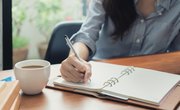
How to Write a Short Essay Describing Your Background

How to Start a Personal Essay for High School English

How to Build an Outline for a Personal Narrative

How to Write a Descriptive Essay on an Influential Person in Your Life
How to write an essay with a thesis statement.
- Napa Valley College: Self Portrait (Description) Essay
- Teen Ink: Self Portrait
Jon Zamboni began writing professionally in 2010. He has previously written for The Spiritual Herald, an urban health care and religious issues newspaper based in New York City, and online music magazine eBurban. Zamboni has a Bachelor of Arts in religious studies from Wesleyan University.

Home » Writers-House Blog » Self-Portrait Essays: Writing Tips
Self-Portrait Essays: Writing Tips
Self-portrait essays are aimed to describe the author. When writing a self-portrait essay, you should think of your audience and find the best approaches to describe yourself to its members. Use evocative images and specific details to make your description more vivid and engaging. Writing consultants from Writers-house.com service wrote this quick guide to help you write an outstanding self-portrait essay.
Think of Your Experiences
First, take your time and reflect on yourself. Think about your personality, your aspirations, and goals. What people you like to see around yourself? What you’d like to achieve in the future? We recommend that you choose a relatively challenging area to make your essay more engaging. For example, if you suffer from anxiety, you can describe how you overcome it to build relationships with other people. You may write about how you keep standing your ground despite the pressure from others. You may also write about your ethical, philosophical, or religious views. The main thing is to clearly define the focus of your essay.
Describe Yourself
You should begin your essay with an introduction. You need to introduce yourself and to provide a general description that will allow your readers to quickly learn the most important things about you. However, avoid simply listing the details about yourself because you don’t want the introduction to be boring. For example, if you want to say that you’re 16 years old, you can tell your readers how you and your parents moved to a new place 13 years ago, when you were three years old.
A good approach is to take a picture of yourself or take a look at your old pictures and describe what this picture can tell about you. For example, if you look happy on this picture, tell your readers about that day and why you were happy. A picture from the past is also a great opportunity to discuss how you’ve changed over time.
Tell Your Story
The main part of your essay must provide your readers with insights into the chosen area of yourself. When writing about some aspects of your life, make sure to illustrate them with specific events. Devote one body paragraph to one aspect, and provide some opinions. For example, you may mention a political argument with your family or explain what do you think about the overall quality of life in the town where you were born. You should show your personality and illustrate it with such details as events, locations, etc.
We recommend that you don’t use an opportunity to make your self-description more vivid by describing objects that surround your everyday life. For example, describe your room or tell your readers something about your hobbies and passions.
The Conclusion
The last paragraph of your essay should wrap it up and tie together all the pieces of information about yourself, creating a complete image. The conclusion is a great place to tell your readers what you think about your life now, and what you’re going to do in the future. We recommend that you don’t restate any information that you’ve already mentioned in the body of your essay. Don’t write a summary. Instead, provide a new perspective. Writing about your goals and plans is a great solution.
We also recommend that you conclude the essay by considering things you’ve been addressing in the introduction in a different light. If your introduction and conclusion are connected to each other, your essay will create a sense of completion. Make sure that different sections of your essay are logically connected to each other and your story is consistent.
Leave a Reply
Be the First to Comment!
Place your order
- Essay Writer
- Essay Writing Service
- Term Paper Writing
- Research Paper Writing
- Assignment Writing Service
- Cover Letter Writing
- CV Writing Service
- Resume Writing Service
- 5-Paragraph Essays
- Paper By Subjects
- Affordable Papers
- Prime quality of each and every paper
- Everything written per your instructions
- Native-speaking expert writers
- 100% authenticity guaranteed
- Timely delivery
- Attentive 24/7 customer care team
- Benefits for return customers
- Affordable pricing

25,000+ students realised their study abroad dream with us. Take the first step today
Meet top uk universities from the comfort of your home, here’s your new year gift, one app for all your, study abroad needs, start your journey, track your progress, grow with the community and so much more.

Verification Code
An OTP has been sent to your registered mobile no. Please verify

Thanks for your comment !
Our team will review it before it's shown to our readers.

- Career Counselling /
Self Portrait Essay Introduction
- Updated on
- Nov 9, 2023
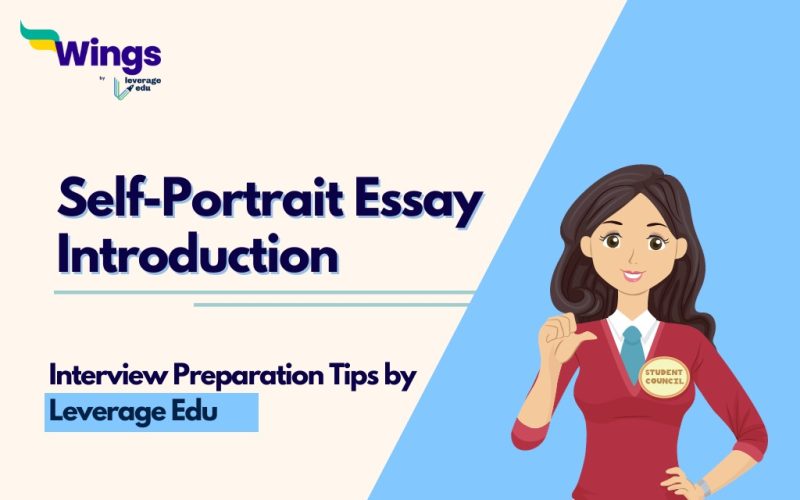
A self-portrait essay is an opportunity to dive deep into one’s own self-psyche and explore the various facets of their personality, experiences, and emotions. It is a form of autobiographical writing that allows individuals to express their thoughts, feelings, and experiences through their own unique lens. In this type of essay, the writer becomes both the subject and the author, painting a vivid picture of themselves for the reader.
A self-portrait essay is not only a means of self-expression but also a powerful tool for self-discovery, reflection, and growth. In this essay, one will explore the various aspects of their personality, experiences, and emotions, and present an introduction of themselves to the reader to gain a deeper understanding of who they are as an individual.
Individuals can refer to this blog, to know and understand how to write a self-portrait essay introduction.
This Blog Includes:
How to write a self-portrait essay introduction , points to include in your self-portrait essay, self portrait sample.
Writing an introduction for a self-portrait essay can be an interesting and reflective exercise. Here are some steps you can follow to write a successful self-portrait essay:
- Brainstorm: Start by brainstorming about yourself. Think about your personality, experiences, strengths, weaknesses, and how they have shaped you as a person. Jot down notes and ideas that come to your mind.
- Introduction: Start your essay with a catchy introduction that sets the tone for your essay. You can use a quote, an anecdote, or a question to engage the reader.
- Personal background: Provide some background information about yourself, including where you grew up, your family, and any significant events that have influenced your life.
- Personal qualities: Describe your personality traits, including your strengths and weaknesses. Discuss how these traits have impacted your life and relationships.
- Accomplishments: Write about your accomplishments, both big and small. Talk about what you have achieved and what you are proud of.
- Challenges: Discuss the challenges you have faced in your life and how you have overcome them. This can be a powerful way to show your resilience and strength.
- Goals: Talk about your goals, both short-term and long-term. Explain what motivates you and what you hope to achieve in the future.
Conclude your essay by summarizing your main points and leaving the reader with a final thought or reflection.
Also Read: How to Handle Tough Interview Questions with Ease
When writing a self-portrait essay, there are several things you can mention to provide a comprehensive and insightful depiction of yourself. Here are some ideas:
- Personal Identity: You can start by mentioning your name, age, place of birth, family background, and any other significant details about your upbringing that have contributed to your identity. Discuss your relationships with family, friends, and significant others, and how they have impacted your life.
- Personality Traits: Describe your personality, including your strengths and weaknesses, your likes and dislikes, your values, and your beliefs.
- Education and Career: Mention your academic qualifications, any degrees or certifications earned, and your current or past profession.
- Hobbies and Interests: Mention any hobbies, sports, or activities you enjoy, and how they have influenced your life.
- Accomplishments: Highlight your achievements, both personal and professional, that you are most proud of.
- Examples of Overcoming Obstacles: Discuss any challenges or obstacles you have faced in life, and how you overcame them with the help of examples. Do not forget to add what you learned from them.
- Goals and Aspirations: Mention your short-term and long-term goals, and what you hope to achieve in life.
In the end, you can also share any unique experiences in your life. Share your experiences related to travel, volunteer work, or other notable events.
Also Read: How To Ace Your Self Introduction in Interview!
Here is a sample that you can refer to while writing a self-portrait essay introduction yourself:
The self-portrait essay can be started by mentioning your name, native place, family background, and education, along with many other details.
A self-portrait essay is an opportunity to express yourself as an individual and introduce the reader to your various facets including your interests, native place, education or belongingness.
For more interesting blogs, check the links given below in the table.
For the latest blogs on Interview Preparation, Careers, and more, follow the Leverage Edu website and YouTube channel .
Aditi Gupta
A bachelors in Journalism and Mass Communication graduate, I am an enthusiastic writer. I love to write about impactful content which can help others. I love to binge watch and listen to music during my free time.
Leave a Reply Cancel reply
Save my name, email, and website in this browser for the next time I comment.
Contact no. *

Leaving already?
8 Universities with higher ROI than IITs and IIMs
Grab this one-time opportunity to download this ebook
Connect With Us
25,000+ students realised their study abroad dream with us. take the first step today..

Resend OTP in

Need help with?
Study abroad.
UK, Canada, US & More
IELTS, GRE, GMAT & More
Scholarship, Loans & Forex
Country Preference
New Zealand
Which English test are you planning to take?
Which academic test are you planning to take.
Not Sure yet
When are you planning to take the exam?
Already booked my exam slot
Within 2 Months
Want to learn about the test
Which Degree do you wish to pursue?
When do you want to start studying abroad.
January 2024
September 2024
What is your budget to study abroad?

How would you describe this article ?
Please rate this article
We would like to hear more.
Have something on your mind?

Make your study abroad dream a reality in January 2022 with
India's Biggest Virtual University Fair

Essex Direct Admission Day
Why attend .

Don't Miss Out
404 Not found
How the Self-Portrait Evolved Into the Selfie
By Google Arts & Culture
Arthur Elgort Self Portrait (2012-01-01) by Arthur Elgort Condé Nast Archive
A look at the artists who’ve defined self-portraiture It’s said that every day 93 million selfies are taken all over the world, with many of them being shared across multiple platforms for handfuls of likes, comments and adoration. While it might seem like we’re more self-obsessed than ever, you could argue the simple act of snapping a pic of yourself is merely a form of self-expression, with a much bigger potential audience.
Astronaut Ricky Arnold takes an selfie or space-selfie to swap thermal control gear. NASA
The art of self-expression, and more specifically self-portraiture – the godfather of the selfie – goes back centuries. Since the earliest times, we as humans have loved to let people know what we looked like through art. Yet it wasn’t until the Early Renaissance, in the mid-15th century, that the trend really started to grow. This shift in artists experimenting with self-portraiture was brought on by mirrors becoming better and cheaper to get hold of and the advent of panel painting – the technique of painting on a flat panel of wood rather than on walls, which were often uneven or using vellum (animal skin that went through a long preparation process).
Mary Cassatt Self-Portrait (circa 1880) by Mary Stevenson Cassatt Smithsonian's National Portrait Gallery
It became an opportunity for artists to depict themselves as the main subject, as heroes in their own stories. Even today it’s still seen as an opportunity to capture a version of yourself nobody else sees. The difference though, is that a digital selfie is a much more instant way of creating a self-portrait, its reach is far bigger than it ever was, and there's more of a danger that it can be manipulated not just by the creator, but by other people. It's this uncertainty that has perhaps led people to talk about the deluge of selfies and the motivations behind them more in recent years.
AFLW 2019 Preliminary Finals (2019-03-23) by Mike Owen Australian Football League
Whatever the method, whether it’s oil on canvas or a snapshot made up of pixels, these parallels suggest a need to look at the artists that have used self-portraiture in their work over the years, to pinpoint key moments, developments and motivations. Here we’ve searched through museum archives and gallery collections to highlight the best examples of self-portraits and selfies from around the world.
Self Portrait as the Apostle Paul (1661) by Rembrandt Harmensz van Rijn Rijksmuseum
Rembrandt Working in the 1600s, Rembrandt’s self-portraits form an important part of his oeuvre. Creating nearly 100 self-portraits in the form of paintings, etchings and drawings, the artist often depicted himself as confident and accomplished, with his velvet beret a signature attribute.
Rembrandt Laughing (about 1628) by Rembrandt Harmensz. van Rijn The J. Paul Getty Museum
Rembrandt's self-portraits were created by the artist looking at himself in a mirror, and the paintings and drawings therefore reverse his actual features. This is one reason why the hands are usually omitted or "just cursorily described" in his paintings as they would be on the "wrong" side if painted from the mirror. Zoom into the images below to see the fine brushstrokes the artist has used to capture an accurate likeness to himself.
Self-portrait with Monkey (1945) by Frida Kahlo Museo Robert Brady
Frida Kahlo Mexican painter Frida Kahlo is known for her colorful and highly detailed self-portraits. Taking them beyond an aesthetic portrayal of herself, Kahlo’s works dealt with the artist’s physical and psychological suffering during her lifetime, as well as touching upon her turbulent marriage to fellow artist Diego Rivera , and sometimes offered a philosophical standpoint on politics, feminism, and other issues.
Self Portrait (5) (1932) by Amrita Sher-Gil National Gallery of Modern Art
Amrita Sher-Gil Said to be a pioneer in Indian art and one of the greatest avant-garde artists of the 20th century, Amrita Sher-Gil embarked on a series of self-portraits during the 1930s while in Paris. Within them, the artist explored her Indian background with her European training and conveyed a plethora of moods.
Self-Portrait as a Tahitian by Amrita Sher-gil Kiran Nadar Museum of Art
This series of paintings was a way for Sher-Gil to experiment with ways of representing the non-western body. She was inspired by Paul Gauguin's work, particularly his depictions of the South Sea Islands and his "stylistically simplified, yet symbolically charged" Tahitian nudes.
Self-portrait (March 1887 - June 1887) by Vincent van Gogh Van Gogh Museum
Vincent Van Gogh In the self-portraits of Dutch post-impressionist painter Vincent van Gogh , he depicts a mirror image of himself. With little money to pay for models to paint and a lack of commissions coming in, Van Gogh decided to paint himself and created around 30 self-portraits in total.
Self-portrait with grey felt hat (September 1887 - October 1887) by Vincent van Gogh Van Gogh Museum
Van Gogh believed that portrait painting would help him develop his skills as an artist. He was once quoted as saying: "If I can manage to paint the coloring of my own head, which is not to be done without some difficulty, I shall likewise be able to paint the heads of other good souls, men and women”. Zoom into van Gogh's images below to see the layers of color and individual brushstrokes the artist built up on the canvas in order to convey a certain atmosphere and mood.
Self Portrait (1940) by Lois Mailou Jones Smithsonian American Art Museum
Lois Mailou Jones In this particular self-portrait by American artist Lois Mailou Jones from 1940, an exploration of identity is apparent. While Jones didn’t travel to Africa until 1970, age 65, here the forms and vibrant color she associated with the ceremonies of Africa are infused in the form of allusions to traditional African sculpture within the work. Jones' work echoes her pride in her African roots and American ancestry and she felt that her greatest contribution to the art world was "proof of the talent of black artists". She wished to be known as an American painter with no labels.
Self-Portrait (1940) by Victor Brecheret MASP - Museu de Arte de São Paulo Assis Chateaubriand
Victor Brecheret Victor Brecheret was an Italian-Brazilian sculptor whose work was a combination of European modernist sculpture with references to his native country through the physical characteristic of his human forms. In this three-dimensional self-portrait created in 1940, Brecheret draws upon motifs from Brazilian folk art and combines them with clean lines and the smoothness and weight of bronze.
In the mirror: self portrait with Joy Hester (1939) by Albert Tucker National Portrait Gallery
Albert Tucker Known better for his paintings, 20th century Australian artist Albert Tucker was also an enthusiastic photographer. In this self-portrait, he appears with his wife Joy Hester, a kindred spirit in her passion for creating art. Though it captures two people instead of the typical one, the candid shot feels intimate as the viewer is left questioning the relationship between the subjects.
Madonna (Self-Portrait) (1975) by Cindy Sherman SCAD Museum of Art
Cindy Sherman American photographer and director Cindy Sherman’s conceptual works stretch the idea of the self-portrait and highlight the ways in which photography can be manipulated to portray what the artist wants us to see.
Untitled (1980) by Cindy Sherman The Museum of Fine Arts, Houston
A playful balance between parody and caricature, Sherman’s works are character studies that make the viewer question everything. She explores identity and the nature of representation using movies, TV, magazines, and art history as her inspiration.
Self Portrait With Fried Eggs 1996 (1999) by Sarah Lucas British Council
Sarah Lucas Sarah Lucas , part of the Young British Artists who emerged during the 1990s, created a series of 12 self-portraits from 1990 to 1998. Photographic self-portraits have become an important part of Lucas’ work in the way they’ve given the artist room to explore various aspects of herself and challenge stereotypical ideas of identity. Lucas is concerned with the casual misogyny of everyday life and her works frequently employ visual puns and bawdy humor to explore this. As well as photography, she uses collage and found objects to execute her ideas.
Excellences Excellences and Perfections Perfections (Episode 03) 14th September 2014 (2014/2014) by Amalia Ulman The Moving Museum
Amalia Ulman Coming to the art world’s attention in 2014 for her Instagram-based art project, Amalia Ulman’s work is a sociological critique and a blurring of fact and fiction. Excellences and Perfections is a compilation of around 200 low-fi selfies that Ulman placed periodically on her Instagram account and presented a semi-fictionalized makeover to her followers.
The artist took the project to extremes when she underwent plastic surgery getting fillers and a staged boob job. Her account amassed 65,000 confused followers while it was live. Combining self-portraiture with a kind of performance art for the digital age, Ulman demonstrated how far the self-portrait can be taken and the dialogue that can be created.
To discover even more selfies and self-portraits, check out our time and color tool . Here you can look at selfies painted way back in the 15th century and compare them to ones created today, or unearth the color palettes adopted by different artists and see the similarities between them.
Explore More 10 Self-Portraits By Women Artists
Nine Women Artists: From Sensual to Amorphous
Kiran nadar museum of art, michael willson's lens on the afl, australian football league, art in fashion: masp's rhodia collection, masp - museu de arte de são paulo assis chateaubriand, eye to i: self-portraits from 1900 - today, smithsonian's national portrait gallery, australia: sport and identity, national portrait gallery, folk archive, british council, the james webb space telescope explained, african american art: harlem renaissance, civil rights era, and beyond, smithsonian american art museum, rediscovering haripura panels: nandalal bose, national gallery of modern art, the address of vermeer's little street discovered, rijksmuseum, the usable past: reflections on american history 2000–2017, the museum of fine arts, houston, condé nast's dream pad, condé nast archive, joseph: a celebrated haitian model in 19th-century paris, the j. paul getty museum, self-portrait with monkey, 1945, museo robert brady, which books did vincent van gogh read, van gogh museum.
- Getty Artists Program
- College Faculty and Students
- School Visits
- Virtual Speaker Series
- On-Demand Webinars
- Curricula and Teaching Guides
- Student Art Activities
- Getty Books in the Classroom
- Getty at Home
- Youth Programs
- Education Department Highlights

Have a language expert improve your writing
Check your paper for plagiarism in 10 minutes, generate your apa citations for free.
- Knowledge Base
- College essay
How to Write About Yourself in a College Essay | Examples
Published on September 21, 2021 by Kirsten Courault . Revised on May 31, 2023.
An insightful college admissions essay requires deep self-reflection, authenticity, and a balance between confidence and vulnerability. Your essay shouldn’t just be a resume of your experiences; colleges are looking for a story that demonstrates your most important values and qualities.
To write about your achievements and qualities without sounding arrogant, use specific stories to illustrate them. You can also write about challenges you’ve faced or mistakes you’ve made to show vulnerability and personal growth.
Table of contents
Start with self-reflection, how to write about challenges and mistakes, how to write about your achievements and qualities, how to write about a cliché experience, other interesting articles, frequently asked questions about college application essays.
Before you start writing, spend some time reflecting to identify your values and qualities. You should do a comprehensive brainstorming session, but here are a few questions to get you started:
- What are three words your friends or family would use to describe you, and why would they choose them?
- Whom do you admire most and why?
- What are the top five things you are thankful for?
- What has inspired your hobbies or future goals?
- What are you most proud of? Ashamed of?
As you self-reflect, consider how your values and goals reflect your prospective university’s program and culture, and brainstorm stories that demonstrate the fit between the two.
Prevent plagiarism. Run a free check.
Writing about difficult experiences can be an effective way to show authenticity and create an emotional connection to the reader, but choose carefully which details to share, and aim to demonstrate how the experience helped you learn and grow.
Be vulnerable
It’s not necessary to have a tragic story or a huge confession. But you should openly share your thoughts, feelings, and experiences to evoke an emotional response from the reader. Even a cliché or mundane topic can be made interesting with honest reflection. This honesty is a preface to self-reflection and insight in the essay’s conclusion.
Don’t overshare
With difficult topics, you shouldn’t focus too much on negative aspects. Instead, use your challenging circumstances as a brief introduction to how you responded positively.

Share what you have learned
It’s okay to include your failure or mistakes in your essay if you include a lesson learned. After telling a descriptive, honest story, you should explain what you learned and how you applied it to your life.
While it’s good to sell your strengths, you also don’t want to come across as arrogant. Instead of just stating your extracurricular activities, achievements, or personal qualities, aim to discreetly incorporate them into your story.
Brag indirectly
Mention your extracurricular activities or awards in passing, not outright, to avoid sounding like you’re bragging from a resume.
Use stories to prove your qualities
Even if you don’t have any impressive academic achievements or extracurriculars, you can still demonstrate your academic or personal character. But you should use personal examples to provide proof. In other words, show evidence of your character instead of just telling.
Many high school students write about common topics such as sports, volunteer work, or their family. Your essay topic doesn’t have to be groundbreaking, but do try to include unexpected personal details and your authentic voice to make your essay stand out .
To find an original angle, try these techniques:
- Focus on a specific moment, and describe the scene using your five senses.
- Mention objects that have special significance to you.
- Instead of following a common story arc, include a surprising twist or insight.
Your unique voice can shed new perspective on a common human experience while also revealing your personality. When read out loud, the essay should sound like you are talking.
If you want to know more about academic writing , effective communication , or parts of speech , make sure to check out some of our other articles with explanations and examples.
Academic writing
- Writing process
- Transition words
- Passive voice
- Paraphrasing
Communication
- How to end an email
- Ms, mrs, miss
- How to start an email
- I hope this email finds you well
- Hope you are doing well
Parts of speech
- Personal pronouns
- Conjunctions
First, spend time reflecting on your core values and character . You can start with these questions:
However, you should do a comprehensive brainstorming session to fully understand your values. Also consider how your values and goals match your prospective university’s program and culture. Then, brainstorm stories that illustrate the fit between the two.
When writing about yourself , including difficult experiences or failures can be a great way to show vulnerability and authenticity, but be careful not to overshare, and focus on showing how you matured from the experience.
Through specific stories, you can weave your achievements and qualities into your essay so that it doesn’t seem like you’re bragging from a resume.
Include specific, personal details and use your authentic voice to shed a new perspective on a common human experience.
Cite this Scribbr article
If you want to cite this source, you can copy and paste the citation or click the “Cite this Scribbr article” button to automatically add the citation to our free Citation Generator.
Courault, K. (2023, May 31). How to Write About Yourself in a College Essay | Examples. Scribbr. Retrieved April 2, 2024, from https://www.scribbr.com/college-essay/write-about-yourself/
Is this article helpful?

Kirsten Courault
Other students also liked, style and tone tips for your college essay | examples, what do colleges look for in an essay | examples & tips, how to make your college essay stand out | tips & examples, "i thought ai proofreading was useless but..".
I've been using Scribbr for years now and I know it's a service that won't disappoint. It does a good job spotting mistakes”
Gagosian Quarterly
Summer 2018 Issue
Book Corner
Self-portrait in a convex mirror, wyatt allgeier discusses the 1984 arion press edition of john ashbery’s self-portrait in a convex mirror , featuring prints by richard avedon, alex katz, elaine and willem de kooning, and more..

From Self-Portrait in a Convex Mirror (San Francisco: Arion Press, 1984), top to bottom: Richard Avedon, John Ashbery, New York, September 27, 1983 ; Alex Katz, Untitled ; frontispiece; and stainless steel case

Wyatt Allgeier is a writer and an editor for Gagosian Quarterly . He lives and works in New York City.
See all Articles
“Poets when they write about other artists always tend to write about themselves.” 1 So wrote the poet John Ashbery about Gertrude Stein, and as true as it is of her, it is just as true of Ashbery himself. Indeed the statement presages the poem that would cement his poetic legacy some three years later, “Self-Portrait in a Convex Mirror,” of 1974. The poem, which takes the sixteenth-century Parmigianino painting of the same title as both subject and vehicle for introspection, pushes Ashbery’s thoughts on Stein to their full-bodied conclusion, engaging in a play of selves and surfaces that reflect back images of both the painter and himself, the poet, in equal measure.
“Self-Portrait in a Convex Mirror” was published in 1975, the centerpiece of a collection of the same name that would become Ashbery’s most dazzling success, winning a trifecta of prizes—the National Book Critics Circle Award for that year and both the Pulitzer Prize and the National Book Award for 1976. The multilayered title poem remains Ashbery’s most famous work to engage so directly with the visual arts, but he was in some manner always writing with and through the aesthetic realm. As early as his childhood in Rochester, where he took painting classes at the city’s Memorial Art Gallery, Ashbery was dazzled by the magic of the visual. By the 1950s, his was a full-fledged curious eye discovering the works of Jackson Pollock and Mark Rothko in New York City. 2 Of those years he would later remark, “American painting seemed the most exciting art around. American poetry was very traditional at that time, and there was no modern poetry in the sense that there was modern painting. So one got one’s inspiration and ideas from watching the experiments of others.” 3 In the next decade, first as a Paris correspondent for Artnews (1963–66), then as the magazine’s executive editor (1966–72), Ashbery would continue to watch these visual experiments, which provided a cache of conceptual and visual material available for integration into his poetry.
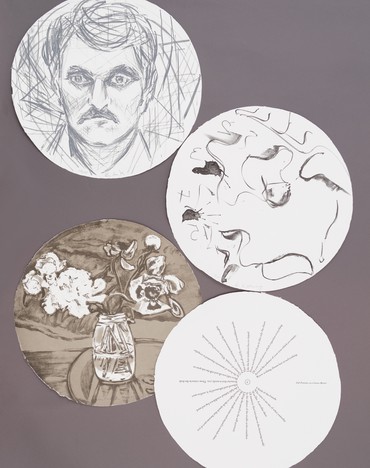
Elaine de Kooning, Untitled ; Willem de Kooning, Untitled ; Jane Freilicher, Untitled ; page with Ashbery’s “Self-Portrait in a Convex Mirror”
Grasping this symbiotic relationship between the poet and the world of visual art, the Arion Press published the most apposite version of “Self-Portrait in a Convex Mirror” in 1984, on the poem’s ten-year anniversary. Made in an edition of 150, this striking livre d’artiste , in a clever marriage of form and content, deftly reifies the philosophies and observations at the heart of Ashbery’s poem. From the start, the stainless steel case, which mimics the design of film canisters, aims to echo the concerns reared by Ashbery’s lines. Housing forty unbound sheets, the case has as its center a convex mirror. Here, the reader, too, gets to partake in a “life englobed.”
. . . This otherness, this “Not-being-us” is all there is to look at In the mirror, though no one can say How it came to be this way. A ship Flying unknown colors has entered the harbor.
Inside the canister, on handmade circular pages, each eighteen inches in diameter, the publication continues its loyal interpretation of the poem. Eight artists were enlisted to contribute original works. Most of them, such as Jane Freilicher and Larry Rivers, were longtime close friends of Ashbery. 4 Logically, the eight prints, also on circular sheets, partake in the same thought-work as the poem, using lithography, woodcut, etching, and other methods to consider the relationship between the creative act and the slipperiness of the self. In addition to Rivers and Freilicher, Richard Avedon, Jim Dine, Alex Katz, R. B. Kitaj, and Elaine and Willem de Kooning contributed work.
Avedon photographed Ashbery reaching into his blazer. (For a pen? A mirror?) Rivers overlaid a typescript of Ashbery’s poem “Pyrography” (1977) on a drawing of the poet in profile, dutifully typing away. Katz’s female subject mirrors Parmigianino’s pose in the original self-portrait, particularly the artist’s intensely present hand. Willem de Kooning responded abstractly with wisps of lines undulating on the circular page, a hint of numbers around the edges like a clock evoking the temporal unease of the opening lines from Ashbery’s third strophe:
The balloon pops, the attention Turns dully away. Clouds in the puddle stir up into sawtoothed fragments. I think of the friends Who came to see me, of what yesterday Was like. A peculiar slant Of memory that intrudes on the dreaming model In the silence of the studio as he considers Lifting the pencil to the self-portrait. How many people came and stayed a certain time, Uttered light or dark speech that became part of you Like light behind windblown fog and sand, Filtered and influenced by it, until no part Remains that is surely you.
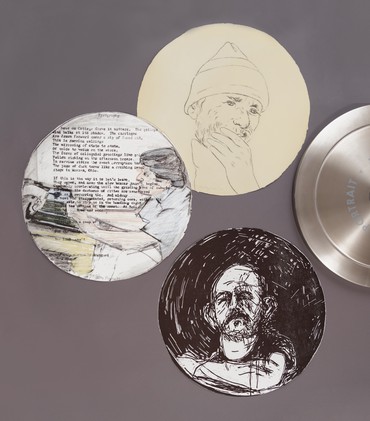
R. B. Kitaj, Untitled ; Larry Rivers, Untitled ; Jim Dine, Untitled
For the poem itself, Arion Press set the lines of Ashbery’s text radiating out from a central circle containing the page number, like spokes from a wheel or rays of light from an iconographic sun. If not exactly user friendly, the effect is nonetheless thematically precise and visually stunning. And since, below the leaves of art and text, the publication includes a vinyl record of Ashbery reading his poem, one might reasonably forgo the spinning motion required for reading, choosing instead to sit back and listen as Ashbery’s singular vocalization transports them like a “carousel starting slowly / And going faster and faster.”
By including this vinyl recording, the publication continues its faithful, formal understanding of the influences girding Ashbery’s works, for the album, through association, ties in the crucial dimension of music. As Ashbery said, “Communication is what interests me in poetry. . . . What I like about music is the persuasion that takes place, though one is not aware of it. At the end of a Bruckner symphony one may rise to one’s feet to applaud. One receives a message without knowing one has been told.” 5 Or as he writes in “Self-Portrait in a Convex Mirror”:
That is the tune but there are no words. The words are only speculation (From the Latin speculum , mirror): They seek and cannot find the meaning of the music. We see only postures of the dream, Riders of the motion that swings the face Into view under evening skies, with no False disarray as proof of authenticity. But it is life englobed.
1 John Ashbery, quoted in David Herd, John Ashbery and American Poetry (Manchester: Manchester University Press, 2000), p. 70. The original source is the February 1971 edition of Artnews , where Ashbery was writing on an exhibition of Gertrude Stein’s collection at the Museum of Modern Art.
2 See Richard Kostelanetz, “How to be a difficult poet,” New York Times , May 23, 1976. Available online at www.nytimes.com/1976/05/23/archives/how-to-be-a-difficult-poet-john-ashbery-has-won-major-prizes-and.html (accessed March 20, 2018).
3 Ashbery, quoted in ibid.
4 See ibid.
5 Ashbery, quoted in ibid.
Artwork © 2018 The Richard Avedon Foundation, © 2018 Alex Katz/Licensed by VAGA, New York, © Elaine de Kooning Trust, © 2018 The Willem de Kooning Foundation/Artists Rights Society (ARS), New York, © Estate of Jane Freilicher, © 2018 R. B. Kitaj, © 2018 Estate of Larry Rivers/Licensed by VAGA, New York, NY, © 2018 Jim Dine/Artists Rights Society (ARS), New York
Related Articles

Everywhere Light
Jake Skeets reflects on Richard Avedon’s series In the American West , focusing on the portrait of his uncle, Benson James.
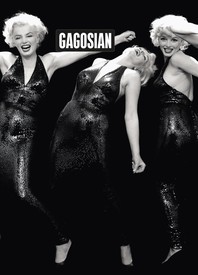
Now available Gagosian Quarterly Summer 2023
The Summer 2023 issue of Gagosian Quarterly is now available, featuring Richard Avedon’s M arilyn Monroe, actor, New York, May 6, 1957 on its cover.

In celebration of the centenary of Richard Avedon’s birth, more than 150 artists, designers, musicians, writers, curators, and representatives of the fashion world were asked to select a photograph by Avedon for an exhibition at Gagosian, New York, and to elaborate on the ways in which image and artist have affected them. We present a sampling of these images and writings.

There is Woman in the Landscapes: Willem de Kooning from 1959 to 1963
Lauren Mahony considers a critical four-year period in the painter’s career, examining the technical changes that occurred between his “abstract parkway landscapes” of the late 1950s and the “pastoral landscapes” that succeeded them, as well as the impact on his work of his impending move to Springs, New York.
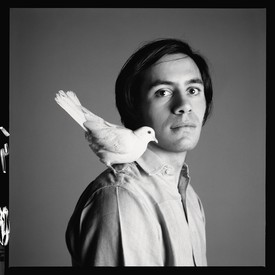
In Conversation Claude Picasso and John Richardson
Picasso biographer Sir John Richardson sits down with Claude Picasso to discuss Claude’s photography, his enjoyment of vintage car racing, and the future of scholarship related to his father, Pablo Picasso.
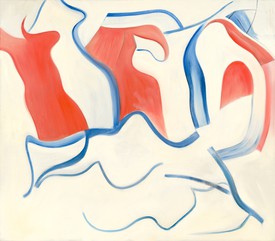
Jenny Saville on Willem de Kooning
In 2013, the exhibition Willem de Kooning: Ten Paintings, 1983–1985 explored the legendary artist’s late work. For the catalogue accompanying the presentation, Jenny Saville spoke on the gestures and elemental elegance of these paintings.
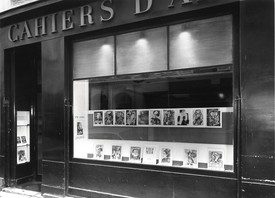
Book Corner Cahiers d’Art
Rare-book specialist Douglas Flamm speaks with Staffan Ahrenberg about the history and evolution of the storied publishing house.
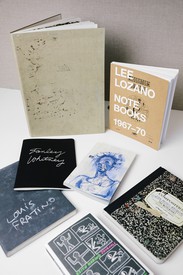
Book Corner Private Pages Made Public
Megan N. Liberty explores artists’ engagement with notebooks and diaries, thinking through the various meanings that arise when these private ledgers become public.
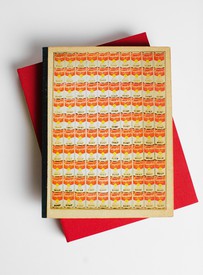
Book Corner On Collecting with Norman Diekman
Rare-book expert Douglas Flamm speaks with designer Norman Diekman about his unique collection of books on art and architecture. Diekman describes his first plunge into book collecting, the history behind it, and the way his passion for collecting grew.

Book Corner Simon Hantaï and the Reserves of Painting
An excerpt from Molly Warnock’s Simon Hantaï and the Reserves of Painting, published by Pennsylvania State University Press in 2020, explores the painter’s developments in the late 1950s and early 1960s.

Book Corner Yves Klein
Rare-book specialist Douglas Flamm and curator Michael Cary sit down to discuss the varied publishing projects and passions of Yves Klein.
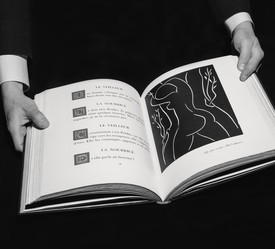
Book Corner Matisse
Lauren Mahony discusses two rare books by Henri Matisse.
- Harold Ancart
- Michael Andrews
- Richard Artschwager
- Richard Avedon
- Francis Bacon
- Georg Baselitz
- Jean-Michel Basquiat
- Ashley Bickerton
- Louise Bonnet
- Glenn Brown
- Chris Burden
- Alexander Calder
- Michael Craig-Martin
- Gregory Crewdson
- John Currin
- Willem de Kooning
- Walter De Maria
- Edmund de Waal
- Awol Erizku
- Roe Ethridge
- Rachel Feinstein
- Urs Fischer
- Walton Ford
- Helen Frankenthaler
- Ellen Gallagher
- Theaster Gates
- Frank Gehry
- Mehdi Ghadyanloo
- Alberto Giacometti
- Piero Golia
- Douglas Gordon
- Katharina Grosse
- Mark Grotjahn
- Jennifer Guidi
- Andreas Gursky
- Duane Hanson
- Simon Hantaï
- Michael Heizer
- Damien Hirst
- Howard Hodgkin
- Carsten Höller
- Thomas Houseago
- Tetsuya Ishida
- Alex Israel
- Neil Jenney
- Jasper Johns
- Donald Judd
- Jamian Juliano-Villani
- Ewa Juszkiewicz
- Titus Kaphar
- Anselm Kiefer
- Roy Lichtenstein
- Brice Marden
- Helen Marden
- Adam McEwen
- Tyler Mitchell
- Henry Moore
- Takashi Murakami
- Marc Newson
- Albert Oehlen
- Nam June Paik
- Steven Parrino
- Giuseppe Penone
- Pablo Picasso
- Rudolf Polanszky
- Richard Prince
- Nathaniel Mary Quinn
- Gerhard Richter
- Nancy Rubins
- Sterling Ruby
- Jenny Saville
- Richard Serra
- Taryn Simon
- Alexandria Smith
- Rudolf Stingel
- Spencer Sweeney
- Mark Tansey
- Robert Therrien
- Tatiana Trouvé
- Kon Trubkovich
- Adriana Varejão
- Andy Warhol
- Mary Weatherford
- Tom Wesselmann
- Anna Weyant
- Rachel Whiteread
- Stanley Whitney
- Jordan Wolfson
- Francesca Woodman
- Christopher Wool
- Richard Wright
- Zeng Fanzhi
Contributors
- Precious Adesina
- David Adjaye
- Taylor Aldridge
- Cecilia Alemani
- Wyatt Allgeier
- Laurie Anderson
- Charles Atlas
- Frank Auerbach
- Michael Auping
- Andisheh Avini
- Negar Azimi
- Virginia B. Hart
- Jacquelynn Baas
- Gerry Badger
- Anne Baldassari
- Carlos Basualdo
- Timothy Baum
- Jessica Beck
- Dodie Bellamy
- Ninotchka Bennahum
- Alissa Bennett
- Olivier Berggruen
- Huma Bhabha
- Venita Blackburn
- Cate Blanchett
- Derek Blasberg
- Yve-Alain Bois
- Christopher Bollen
- Francesco Bonami
- Phoebe Boswell
- Ami Bouhassane
- William Breeze
- Alix Browne
- Rocket Caleshu
- Richard Calvocoressi
- Federico Campagna
- Michael Cary
- Jordan Casteel
- Alison Castle
- Mary Ann Caws
- Zélie Chabert
- Amit Chaudhuri
- Derek Cianfrance
- Luca Cipelletii
- Annie Cohen-Solal
- Anderson Cooper
- Sofia Coppola
- Eileen Costello
- Somaya Critchlow
- Michael Cuby
- Nicholas Cullinan
- Sara Cwynar
- Adelaide Damoah
- Susan Davidson
- Jeremy Deller
- Travis Diehl
- Jewels Dodson
- Fiona Duncan
- Sabine Eckmann
- John Elderfield
- Brendan Embser
- Akwaeke Emezi
- Frida Escobedo
- Percival Everett
- Morgan Falconer
- Jill Feldman
- Genieve Figgis
- Douglas Flamm
- Raymond Foye
- DeVonn Francis
- Mark Francis
- Mark Franko
- Sara Fumagalli
- Olivier Gabet
- Mary Gabriel
- Aikaterini Gegisian
- Drew Gilpin Faust
- Alison M. Gingeras
- Mark Godfrey
- Alice Godwin
- Paul Goldberger
- Thelma Golden
- Salomé Gómez-Upegui
- Linda Goode Bryant
- Yves Guignard
- Wade Guyton
- Lauren Halsey
- Maria Morris Hambourg
- Freja Harrell
- Richard Hell
- Lynn Hershman Leeson
- Katy Hessel
- Jennifer Higgie
- Walter Hood
- Nalo Hopkinson
- Delphine Huisinga
- Kim Hyesoon
- Gillian Jakab
- Wendy Jeffers
- Miranda July
- Dodie Kazanjian
- Corey Keller
- Omar Kholeif
- Harumi Klossowska de Rola
- Hari Kunzru
- Benjamín Labatut
- James Lawrence
- Sam Lipsyte
- Lauren Mahony
- Gerard Malanga
- Pepi Marchetti Franchi
- Alison McDonald
- Rennie McDougall
- William Middleton
- Bebe Miller
- Lydia Millet
- Cristián Mohaded
- Meleko Mokgosi
- Benjamin Moser
- Ottessa Moshfegh
- Louise Neri
- K.O. Nnamdie
- Jean Nouvel
- Hans Ulrich Obrist
- Cynthia Oliver
- Ashley Overbeek
- Kay Pallister
- Cecilia Pavón
- Antony Penrose
- Pierpaolo Piccioli
- Gillian Pistell
- Paul B. Preciado
- Francine Prose
- Calida Rawles
- Ariana Reines
- Vicky Richardson
- Sergio Risaliti
- Ruth Rogers
- Jacqueline Rose
- Julian Rose
- Scott Rothkopf
- Margit Rowell
- Mary Rozell
- Robert M. Rubin
- Jérôme Sans
- Antwaun Sargent
- Barry Schwabsky
- Patrick Seguin
- Cindy Sherman
- Richard Shiff
- Yayoi Shionoiri
- Katy Siegel
- Ross Simonini
- Nick Simunovic
- Jake Skeets
- Patti Smith
- Daniel Spaulding
- Natasha Stagg
- Ashley Stewart Rödder
- Mike Stinavage
- Diamond Stingily
- Charles Stuckey
- Sydney Stutterheim
- Martine Syms
- Adam Szymczyk
- Catherine Taft
- Brandon Taylor
- Hendel Teicher
- Tiziana Terranova
- Harry Thorne
- Lisa Turvey
- Jacoba Urist
- Carlos Valladares
- Sumayya Vally
- Kara Vander Weg
- Nicola Vassell
- Diana Widmaier-Ruiz-Picasso
- Joy Williams
- Ulrich Wilmes
- Mabel O. Wilson
- Andrew Winer
- Alexander Wolf
- Josh Zajdman
- Anne-Laure Zevi
Self-Portrait by Sofonisba Anguissola Essay
Anguissola was inventive and playful as she explored the narrative possibilities of portraiture, stretching the boundaries of the genre she was confined to because the artist was not allowed to study the nude figures required to represent historical and religious paintings because she was a woman. She was not just the most frequent self-portrait painter, but she was also unique in that her self-portraits were of herself as an artwork, not a painter. As a result, the work’s ultimate meaning has become a mystery, even though it continues to reveal new tales and inspire fresh perspectives on art. Thus, the paper aims to analyze the self-portrait of Anguissola and reflect on the painting created in 1556.
Sofonisba portrays herself painting in the self-portrait from 1556, adding mixed colors to a painting that features a passionate kiss between the Virgin and the Christ Child. She appears to be in the middle of a stroke as she casts her gaze forth. She has a calm, collected demeanor. Her right hand is supported while she applies the paintbrush to the canvas by a maulstick, a standard tool used to assist the artist’s hand. The artist is dressed simply in black, perhaps to suggest humility and virtue; her understated appearance reflects the woman of honor. The fact that Sofonisba included a picture of the Virgin Mary and the Christ child in her 1556 self-portrait speaks volumes about her virginity. Sofonisba probably included this private moment between mother and son here just to portray herself as a righteous woman—one who recognizes the greatest noblewoman, the Virgin Mary—even though depictions of Mary trying to feed, hugging, or embracing Christ as a baby were common during this time.
The strongest hues in Self-portrait at the Easel are those in Anguissola’s palette and her painting. This demonstrates Anguissola’s ability to wonderfully represent situations other than herself and the family. The Madonna’s pale, neutral complexion tone with touches of crimson around the cheekbones and hair color is similar to Anguissola’s. Even Madonna’s hairdo, with the delicate braid wrapped around her head almost like a halo, is comparable to Anguissola’s. Mary’s hand is highlighted in the painting, much way Anguisslike Anguissola’s hand states the two women’s intimate relationship. Anguissola sees her brilliance and connects with Mary’s authoritative presence. However, Christ appears simple; he is white and pure, and nothing draws unwarranted attention to him. This may be seen to emphasize Anguissola’s viewpoint on the value of women. Jesus and this masterpiece would not have existed without Mary and Anguissola, respectively.
The paradoxical qualities required of a young peasant woman and an artist are depicted in Sofonisba Anguissola’s self-portraits. Sofonisba Anguissola’s Self-portrait at the Easel shows the artist clad entirely in black against a misty backdrop (Robinson). I find it fascinating that she produced the most self-portraits compared to any other artist between Dürer and Rembrandt, and her peers hailed her as the greatest woman painter of her day (Self-portrait). Anguissola’s talent, clean reputation, and extraordinary education were made possible by her father, a nobleman who was poor but forward-thinking (Macdonald). It would enable her to work as an artist at the palace of King Philip II of Spain (Macdonald). However, as Anguissola was a woman and males were the court painters, she was granted a title more fitting for her sexual identity: lady-in-waiting to Philip’s wife, Elizabeth of Valois (Macdonald). These gender-based modifications enabled the Cremonese artist to excel in the competitive realm of royal art.
Nevertheless, these same modifications could also be to blame for the incorrect crediting of Anguissola’s efforts. For instance, even though it closely resembled her other well-known works, Juan Pantoja de la Cruz was incorrectly given credit for Anguissola’s 1565 Portrait of Philip II (Macdonald). The work was not returned to Anguissola until after scientific analyses in the 1990s (Macdonald). The quantity of Anguissola’s recognized works is growing, allowing an understanding of the significance of her works during that time.
In this self-portrait from 1556, Sofonisba depicts herself painting while incorporating varied hues into a scene that shows the Virgin and the Christ Child sharing a passionate kiss. Sofonisba most likely included this private exchange between a mother and son in order to present herself as a moral person. Anguissola’s hair color and the Madonna’s delicate, neutral skin tone with hints of scarlet around the cheekbones are comparable. In the period between Dürer and Rembrandt, Sofonisba Anguissola painted the most self-portraits, and her contemporaries regarded her as the best female painter of the time. The Cremonese artist’s father was a nobleman who was destitute but forward-thinking, and his talent made it feasible for her to pursue a career as an artist at Philip II of Spain’s palace. She was given the title of lady-in-waiting to Philip’s wife, Elizabeth of Valois, which was more appropriate for her sexual orientation. She was able to succeed in the challenging field of royal art because of these changes based on gender. However, the inaccurate attribution of her efforts may also be due to these same alterations.
Works Cited
Macdonald, Deanna. “ Female Artists in the Renaissance .” Smart History. Web.
Robinson, Rosa Lena Reed. “Wonder Women: Sofonisba Anguissola, Lavinia Fontana and Artemisia Gentileschi. A Critical Analysis of Renaissance and Baroque Self-Portrait Painting by Female Artists.” Submitted in Partial Fulfillment of the Requirements for the Degree of Master of Arts in Art History at Studio Art Centers International Florence , 2017, pp. 25-91.
“Self-portrait.” MFA Boston. Web.
- Chicago (A-D)
- Chicago (N-B)
IvyPanda. (2023, December 8). Self-Portrait by Sofonisba Anguissola. https://ivypanda.com/essays/self-portrait-by-sofonisba-anguissola/
"Self-Portrait by Sofonisba Anguissola." IvyPanda , 8 Dec. 2023, ivypanda.com/essays/self-portrait-by-sofonisba-anguissola/.
IvyPanda . (2023) 'Self-Portrait by Sofonisba Anguissola'. 8 December.
IvyPanda . 2023. "Self-Portrait by Sofonisba Anguissola." December 8, 2023. https://ivypanda.com/essays/self-portrait-by-sofonisba-anguissola/.
1. IvyPanda . "Self-Portrait by Sofonisba Anguissola." December 8, 2023. https://ivypanda.com/essays/self-portrait-by-sofonisba-anguissola/.
Bibliography
IvyPanda . "Self-Portrait by Sofonisba Anguissola." December 8, 2023. https://ivypanda.com/essays/self-portrait-by-sofonisba-anguissola/.
- The Art of Self-Portrait: Rembrandt by Rembrandt
- Overview: “Rembrandt's Self-Portrait with a Dead Bittern”
- Rembrandt Van Rijn: Biography and Drawings
- Self-Portraits in the Context of Content Areas
- Salvador Dali: Surrealist Self-Portrait
- The Huaxian Earthquake: China's Deadliest Disaster
- Rembrandt's Self-Portrait and Journal
- Adélaïde Labillle-Guiard’s Self-Portrait with Two Pupils
- Yue Minjun’s Self-Portraits As Modern Art
- Rembrandt's Self-Portrait, Vincent van Gogh's Portrait of Joseph Roulin and Andy Warhol's Gold Marilyn Monroe. Comparison
- Raphael's vs. Parmigianino's Madonna Paintings
- "Pinturas de Casta" Article by Masheli del Val
- Cindy Sherman's Adaptation of Fornarina
- Asher B. Durand’s Painting Thanatopsis
- The "La Noche" Painting by Mary Weatherford
Heilbrunn Timeline of Art History Essays
Portraiture in renaissance and baroque europe.
Annunciation Triptych (Merode Altarpiece)
Workshop of Robert Campin
Portrait of a Woman with a Man at a Casement
Fra Filippo Lippi
Portrait of a Carthusian
Petrus Christus
Tommaso di Folco Portinari (1428–1501); Maria Portinari (Maria Maddalena Baroncelli, born 1456)
Hans Memling
Erasmus of Rotterdam
Albrecht Dürer
François I (1494–1547), King of France
Girolamo della Robbia , or
Portrait of a Young Man
Bronzino (Agnolo di Cosimo di Mariano)
Hermann von Wedigh III (died 1560)
Hans Holbein the Younger
Brother Gregorio Belo of Vicenza
Lorenzo Lotto
Filippo Archinto (born about 1500, died 1558), Archbishop of Milan
Titian (Tiziano Vecellio)
Alessandro Vittoria (1525–1608)
Paolo Veronese (Paolo Caliari)
Guidobaldo II della Rovere, Duke of Urbino (1514–1574), With his Armor by Filippo Negroli
Portrait of a Young Man, Probably Robert Devereux (1566–1601), Second Earl of Essex
Nicholas Hilliard
Princess Elizabeth (1596–1662), Later Queen of Bohemia
Robert Peake the Elder
- Self-Portrait
Anthony van Dyck
Portrait of a Woman, Probably Susanna Lunden (Susanna Fourment, 1599–1628)
Peter Paul Rubens
Portrait of Charlotte Duchesne
Philippe de Champaigne
The Artist's Mother: Head and Bust, Three-Quarters Right
Rembrandt (Rembrandt van Rijn)
The Fortune-Teller
Georges de La Tour
James Stuart (1612–1655), Duke of Richmond and Lennox
Don Gaspar de Guzmán (1587–1645), Count-Duke of Olivares
Juan Bautista Martínez del Mazo
Rubens, Helena Fourment (1614–1673), and Their Son Frans (1633–1678)
Herman Doomer (ca. 1595–1650)
Juan de Pareja (ca. 1608–1670)
Velázquez (Diego Rodríguez de Silva y Velázquez)
The Jabach Family
Charles Le Brun
Jean Sorabella Independent Scholar
August 2007
A portrait is typically defined as a representation of a specific individual, such as the artist might meet in life. A portrait does not merely record someone’s features, however, but says something about who he or she is, offering a vivid sense of a real person’s presence.
The traditions of portraiture in the West extend back to antiquity and particularly to ancient Greece and Rome, where lifelike depictions of distinguished men and women appeared in sculpture and on coins. After many centuries in which generic representation had been the norm, distinctive portrait likenesses began to reappear in Europe in the fifteenth century. This change reflected a new growth of interest in everyday life and individual identity as well as a revival of Greco-Roman custom. The resurgence of portraiture was thus a significant manifestation of the Renaissance in Europe.
The earliest Renaissance portraits were not paintings in their own right, but rather important inclusions in pictures of Christian subjects. In medieval art , donors were frequently portrayed in the altarpieces or wall paintings that they commissioned, and in the fifteenth century painters began to depict such donors with distinctive features presumably studied from life. An example is Robert Campin’s Annunciation Triptych (Merode Altarpiece) ( 56.70 ) of about 1427–32, in which the man and woman in the left wing have the specificity characteristic of portraiture. Hans Memling’s portraits of Tommaso and Maria Portinari ( 14.40.626-27 ), painted around 1470, were also probably meant to flank the image of a saint in a small triptych, yet each likeness fills a whole panel and has the emphasis of a portrait in its own right.
One of the hallmarks of European portraiture is a sense of reality, an apparent intention to depict the unique appearance of a particular person. Each portrait is thus meant to express individual identity, but as Erwin Panofsky recognized, it also “seeks to bring out whatever the sitter has in common with the rest of humanity” (quoted in Shearer West, Portraiture [Oxford, 2004], p. 24). This second aspect of portraiture comes across in the considerable conservatism of the genre: most portraits produced in Renaissance and Baroque Europe follow one of a very small range of conventional formats. The profile view, which was favored in ancient coins, was frequently adopted in the fifteenth century, for instance, in Fra Filippo Lippi’s picture of a woman at a window, with a young man peeking in ( 89.15.19 ). The three-quarter face, which allows for greater engagement between sitter and viewer, was also widely favored. Petrus Christus used this format in his portrait of a Carthusian monk ( 49.7.19 ), which places the sitter in a simply characterized interior, with a horizontal element like a windowsill at the bottom and a glow of light in the left background. Italian painters at the turn of the sixteenth century embraced and refined this formula. Leonardo da Vinci’s celebrated portrait of Mona Lisa (ca. 1503–5; Musée du Louvre, Paris), for instance, increases the sense of connection between sitter and viewer by placing the hands on the window ledge; the enigmatic smile departs from the perfect composure seen elsewhere. Raphael’s widely imitated portrait of Baldassare Castiglione (ca. 1514; Louvre) uses the half-length format seen in the Mona Lisa but tightens the focus on the sitter by highlighting his lively face against a softly lit gray backdrop.
Mannerist artists adjusted these conventions to produce works like Bronzino’s portrait of a young man ( 29.100.16 ) painted in the 1530s: the figure again appears half-length, but the expression is aloof rather than serene, curious pieces of furniture replace the barrier along the lower border, and the hands—the right fingering the pages of a book and the left fixed on the hip—suggest momentary action and bravado rather than quiet dignity. The hand in the book confers an air of learned nonchalance on sitters both like and unlike Bronzino’s fashionable young man: it occurs, for instance, in Titian’s sensitive portrait of the aged archbishop Filippo Archinto, painted in the 1550s ( 14.40.650 ). The hand on hip frequently appears in portraits of rulers or would-be rulers, as in Van Dyck’s splendid likeness of James Stuart , painted around 1635 ( 89.15.16 ). The full-length format, always a costly and grandiose option, increases the sitter’s air of power and self-possession. Even greater magnificence is implicit in equestrian portraits, which also had Greco-Roman associations and were much favored in Renaissance and Baroque courts ( 52.125 ).
The conventional aspects of portraiture ensure that each example will bear some resemblance to the next, and yet this general similarity makes the distinctive qualities of each one the more salient. Sometimes the sitter’s beauty or demeanor is emphasized, as in Nicholas Hilliard’s miniature portrait of a young man ( 35.89.4 ) with luxuriant curls and a straightforward gaze. In other examples, a magnificent costume highlights the sitter’s wealth and fashionable taste ( 51.194.1 ). Other portraits suggest a sitter’s profession or interests by including possessions and attributes that characterize him as, for example, a humanist author ( 19.73.120 ), an accomplished sculptor ( 46.31 ), or an impassioned preacher ( 65.117 ). In addition to these rather public aspects of identity, portraits may also suggest the sitter’s inner psychology or state of mind. Hints of personality are especially evident in seventeenth-century portrayals of less exalted persons, such as Rembrandt’s portrait of the craftsman Herman Doomer ( 29.100.1 ), Velázquez’s picture of his assistant Juan de Pareja ( 1971.86 ), and Rubens’ seductive likeness of a woman who may have been his sister-in-law ( 1976.218 ).
In addition to recording appearances, portraits served a variety of social and practical functions in Renaissance and Baroque Europe. Miniatures were given as gifts of intimate remembrance, while portraits of rulers asserted their majesty in places from which they were absent. In courtly settings, portraits often had diplomatic significance. For instance, Jan van Eyck traveled to make portraits (now lost) of potential wives for his patron, Philip the Good of Burgundy , and Girolamo della Robbia made a ceramic portrait of Francis I ( 41.100.245 ) to adorn the residence of one of his comrades in arms. A portrait was often commissioned at a significant moment in someone’s life, such as betrothal , marriage , or elevation to an office. The making of a portrait typically involved a simple arrangement between artist and patron, but artists also worked on their own initiative, particularly when portraying friends and family ( 18.72 ; 1981.238 ; 1994.7 ). These portraits sometimes display a sense of affection, informality, or experimentation unusual in commissioned works. Finally, artists captured their own likenesses in self-portraits ( 49.7.25 ; 14.40.618 ), where they freely pursued their own ends, whether to claim elevated status, to showcase technical mastery, or to seek frank self-reflection.
Sorabella, Jean. “Portraiture in Renaissance and Baroque Europe.” In Heilbrunn Timeline of Art History . New York: The Metropolitan Museum of Art, 2000–. http://www.metmuseum.org/toah/hd/port/hd_port.htm (August 2007)
Further Reading
Brilliant, Richard. Portraiture . Cambridge, Mass.: Harvard University Press, 1991.
Pope-Hennessy, John. The Portrait in the Renaissance . New York: Pantheon, 1966.
West, Shearer. Portraiture . Oxford: Oxford University Press, 2004.
Additional Essays by Jean Sorabella
- Sorabella, Jean. “ Pilgrimage in Medieval Europe .” (April 2011)
- Sorabella, Jean. “ Venetian Color and Florentine Design .” (October 2002)
- Sorabella, Jean. “ Art of the Roman Provinces, 1–500 A.D. .” (May 2010)
- Sorabella, Jean. “ The Nude in Baroque and Later Art .” (January 2008)
- Sorabella, Jean. “ The Nude in the Middle Ages and the Renaissance .” (January 2008)
- Sorabella, Jean. “ The Nude in Western Art and Its Beginnings in Antiquity .” (January 2008)
- Sorabella, Jean. “ Monasticism in Western Medieval Europe .” (originally published October 2001, last revised March 2013)
- Sorabella, Jean. “ Interior Design in England, 1600–1800 .” (October 2003)
- Sorabella, Jean. “ The Vikings (780–1100) .” (October 2002)
- Sorabella, Jean. “ Painting the Life of Christ in Medieval and Renaissance Italy .” (June 2008)
- Sorabella, Jean. “ The Birth and Infancy of Christ in Italian Painting .” (June 2008)
- Sorabella, Jean. “ The Crucifixion and Passion of Christ in Italian Painting .” (June 2008)
- Sorabella, Jean. “ Carolingian Art .” (December 2008)
- Sorabella, Jean. “ Ottonian Art .” (September 2008)
- Sorabella, Jean. “ The Ballet .” (October 2004)
- Sorabella, Jean. “ Baroque Rome .” (October 2003)
- Sorabella, Jean. “ The Opera .” (October 2004)
- Sorabella, Jean. “ The Grand Tour .” (October 2003)
Related Essays
- Leonardo da Vinci (1452–1519)
- Peter Paul Rubens (1577–1640) and Anthony van Dyck (1599–1641): Paintings
- Portrait Painting in England, 1600–1800
- Rembrandt (1606–1669): Paintings
- Velázquez (1599–1660)
- Albrecht Dürer (1471–1528)
- Art and Love in the Italian Renaissance
- Burgundian Netherlands: Court Life and Patronage
- Elizabethan England
- The Face in Medieval Sculpture
- Frans Hals (1582/83–1666)
- Italian Renaissance Frames
- Jan van Eyck (ca. 1390–1441)
- Mannerism: Bronzino (1503–1572) and his Contemporaries
- Painting in Oil in the Low Countries and Its Spread to Southern Europe
- Painting the Life of Christ in Medieval and Renaissance Italy
- Paintings of Love and Marriage in the Italian Renaissance
- Paolo Veronese (1528–1588)
- Patronage at the Later Valois Courts (1461–1589)
- Prague during the Rule of Rudolf II (1583–1612)
- Roman Portrait Sculpture: The Stylistic Cycle
- Sixteenth-Century Painting in Emilia-Romagna
- Sixteenth-Century Painting in Lombardy
- Sixteenth-Century Painting in Venice and the Veneto
- Titian (ca. 1485/90?–1576)
- Balkan Peninsula, 1400–1600 A.D.
- Balkan Peninsula, 1600–1800 A.D.
- Central Europe (including Germany), 1400–1600 A.D.
- Central Europe (including Germany), 1600–1800 A.D.
- Eastern Europe and Scandinavia, 1400–1600 A.D.
- Eastern Europe and Scandinavia, 1600–1800 A.D.
- Florence and Central Italy, 1400–1600 A.D.
- Florence and Central Italy, 1600–1800 A.D.
- France, 1400–1600 A.D.
- France, 1600–1800 A.D.
- Great Britain and Ireland, 1400–1600 A.D.
- Great Britain and Ireland, 1600–1800 A.D.
- Iberian Peninsula, 1400–1600 A.D.
- Iberian Peninsula, 1600–1800 A.D.
- Low Countries, 1400–1600 A.D.
- Low Countries, 1600–1800 A.D.
- Rome and Southern Italy, 1400–1600 A.D.
- Rome and Southern Italy, 1600–1800 A.D.
- Venice and Northern Italy, 1400–1600 A.D.
- Venice and Northern Italy, 1600–1800 A.D.
- 15th Century A.D.
- 16th Century A.D.
- 17th Century A.D.
- Baroque Art
- Central Europe
- Central Italy
- Great Britain and Ireland
- Hermes / Mercury
- High Renaissance
- Iberian Peninsula
- Low Countries
- Medieval Art
- Miniature Painting
- Northern Italy
- Numismatics
- Oil on Canvas
- Preparatory Study
- Printmaking
- Relief Sculpture
- Renaissance Art
- Southern Italy
Artist or Maker
- Andrea del Sarto
- Campin, Robert
- Christus, Petrus
- Coypel, Charles Antoine
- De Champaigne, Philippe
- Della Robbia, Andrea
- Della Robbia, Girolamo
- Della Robbia, Luca
- Dolci, Carlo
- Doomer, Herman
- Dürer, Albrecht
- Hilliard, Nicholas
- Holbein, Hans, the Younger
- Købke, Christen
- La Tour, Georges de
- Le Brun, Charles
- Leonardo da Vinci
- Lippi, Fra Filippo
- Lotto, Lorenzo
- Martínez del Mazo, Juan Bautista
- Memling, Hans
- Parmigianino
- Peake, Robert, the Elder
- Rubens, Peter Paul
- Stuart, Gilbert
- Van Dyck, Anthony
- Van Eyck, Jan
- Van Rijn, Rembrandt
- Veronese, Paolo
Online Features
- 82nd & Fifth: “Tipping Point” by Stijn Alsteens
- The Artist Project: “Il Lee on Rembrandt van Rijn’s portraits”
- The Artist Project: “Julie Mehretu on Velázquez’s Juan de Pareja “
- The Artist Project: “Liliana Porter on Jacometto’s Portrait of a Young Man “
- The Artist Project: “Nina Katchadourian on Early Netherlandish portraiture”
- The Artist Project: “Paul Tazewell on Anthony van Dyck’s portraits”
- MetBlogs: Now at the Met: “The Jabach Portrait: Reflections on an Extraordinary Acquisition” by Keith Christiansen
- MetCollects: “ Everhard Jabach (1618–1695) and His Family by Charles Le Brun”

IMAGES
VIDEO
COMMENTS
A self-portrait essay is a piece of writing that describes the author's looks and personal qualities. It uses evocative images and characteristic details to show why this person stands out from the crowd. As a rule, it is a descriptive or reflective essay. Still, it can be argumentative if you want to contradict someone else's opinion about ...
A self-portrait essay is a paper that describes you -- and what's important to you -- to your reader. Choosing what aspects of yourself you want to describe before you begin your essay will help you choose the most evocative images and events to include in your essay. Using specific images from your life will give your reader a physical image ...
When writing a self-portrait essay, you should think of your audience and find the best approaches to describe yourself to its members. Use evocative images and specific details to make your description more vivid and engaging. Writing consultants from Writers-house.com service wrote this quick guide to help you write an outstanding self ...
The Reflected Best-Self and Becoming Extraordinary. Our theory of the RBS proposes that there are three pathways by which the RBS portrait helps employees to become extraordinary: (1) expanding the constellation of possible selves, (2) enhancing personal expressiveness and (3) facilitating social architecting.
Self Portrait Essay Introduction. A self-portrait essay is an opportunity to dive deep into one's own self-psyche and explore the various facets of their personality, experiences, and emotions. It is a form of autobiographical writing that allows individuals to express their thoughts, feelings, and experiences through their own unique lens.
It comprises two types out papers: a self-portrait essay and ampere portrait of another personality. This article explains like to write these assignment with utmost efficiency. You will discover the best tips, ideas, and samples to described yourself otherwise something else as precisely as possible. Essay 2: Portrait of a Person - Dr. Note ...
A true self-portrait in essay form. The good, the bad, the ugly — and the beautiful. I wrote it in December 2013. ... Self Portrait in Essay Form (circa 12/2013) [Originally self-published on my ...
1654 Words. 7 Pages. Open Document. SELF-PORTRAIT ART ESSAY. Self-portraits have been used by artists for centuries to explore aspects of the self. They are the subjects they know best and artists have reflected this through their treatment of media, subject matter and techniques. Two artists who explore aspects of their personality and life ...
Mary Cassatt Self-Portrait (circa 1880) by Mary Stevenson Cassatt Smithsonian's National Portrait Gallery. It became an opportunity for artists to depict themselves as the main subject, as heroes in their own stories. Even today it's still seen as an opportunity to capture a version of yourself nobody else sees.
Students explore the topic of portraiture, describe and analyze a sculptor's self-portrait, and compose poems using simile and symbolism. This lesson is suited for the end of a unit or semester, or for a year-end project. • describe and analyze a portrait sculpture. • make personal connections to characters in fictional stories.
Good example. I peel off my varsity basketball uniform and jump into the shower to wash away my sweat, exhaustion, and anxiety. As the hot water relaxes my muscles from today's 50 suicide drills, I mull over what motivating words I should say to my teammates before next week's championship game against Westmont High.
1. This essay sample was donated by a student to help the academic community. Papers provided by EduBirdie writers usually outdo students' samples. Cite This Essay. Download. As Pablo Picasso once said, "Art is a lie that makes us realize the truth". I for one felt that painting my self-portrait helped me realize a part of my true personality.
Self-Portrait in aConvex Mirror. Wyatt Allgeier discusses the 1984 Arion Press edition of John Ashbery's Self-Portrait in a Convex Mirror, featuring prints by Richard Avedon, Alex Katz, Elaine and Willem de Kooning, and more. Wyatt Allgeier is a writer and an editor for Gagosian Quarterly. He lives and works in New York City.
In Paris, he executed more than twenty self-portraits that reflect his ongoing exploration of complementary color contrasts and a bolder style. In February 1888, Van Gogh departed Paris for the south of France, hoping to establish a community of artists in Arles. ... Additional Essays by Department of European Paintings.
As compared to the flamboyant images of the middle years, Rembrandt's self-portraits of the late period demonstrate a dramatic change in tone and style. An "increased sense of gravity and serenity" dominate the portraits of the impoverished artist who enters "a brutally honest phase in his life" (Stein & Rosen 116).
Description. In Frida Kahlo's self-portrait there can be seen the artist standing on a stone/grave like pedestal with writing engraved on it, Kahlo is wearing a pink frilly dress that almost covers her feet, she is wearing cream white gloves that end just past her elbow, around her neck she is wearing a necklace that has red beads with three green leaf-like beads attached to it.
Self Portrait Essay. This essay sample was donated by a student to help the academic community. Papers provided by EduBirdie writers usually outdo students' samples. Inequality between genders in the Renaissance is no surprise however the women of the time, mostly upper class, were not completely stripped from their privileges.
In this self-portrait from 1556, Sofonisba depicts herself painting while incorporating varied hues into a scene that shows the Virgin and the Christ Child sharing a passionate kiss. Sofonisba most likely included this private exchange between a mother and son in order to present herself as a moral person.
Anthony Williams Self-Portrait Summary either be immigrants or their parents were immigrants. Far be it for me to say immigrants, and their children, are necessarily better scientists or people, but immigrants and the children of immigrants tend to occupy the most prestigious and highest pay jobs (Strauss, 2017).
These portraits sometimes display a sense of affection, informality, or experimentation unusual in commissioned works. Finally, artists captured their own likenesses in self-portraits (49.7.25; 14.40.618), where they freely pursued their own ends, whether to claim elevated status, to showcase technical mastery, or to seek frank self-reflection.
2. Figure 5, Self- portrait in a Straw Hat by Marie Louise Elisabeth Vegée-LeBrun. Oil on canvas, 1782. The technique of chiaroscuro that gives the figure mass and depth also give it life. The attention to detail within this is piece astonishing, the subject's hair, Get more content on StudyHub Albrecht Durer Self-Portrait Essay
Self-Portrait Essay. Paper Type: Free Essay. Subject: English. Wordcount: 1189 words. Published: 24th Feb 2017. Reference this. Share this: Facebook Twitter Reddit LinkedIn WhatsApp. My understanding of the society I live in changes from day to day. When Obama was elected, I had great hopes for this country and that racial equality would ...
Adolescent Self-Portrait Essay Adolescent Self-Portrait December 1, 2014 BSHS/325 Maria Perrotta Adolescent Self-Portrait From the time an individual is born, they are facing continual growth and changes. Upon reaching adolescence, an individual will face many changes quickly that affect feelings and personality.
But, it wasn't until the artist was 80 years old that she produced her first self-portrait. "Life begins at seventy!". Neel once declared. Neel did feature in her own paintings before her ...
Nona Faustine's self-portrait series, "White Shoes," highlights the city's historic role in the transatlantic slave trade, as well as broader narratives about the perception of Black ...